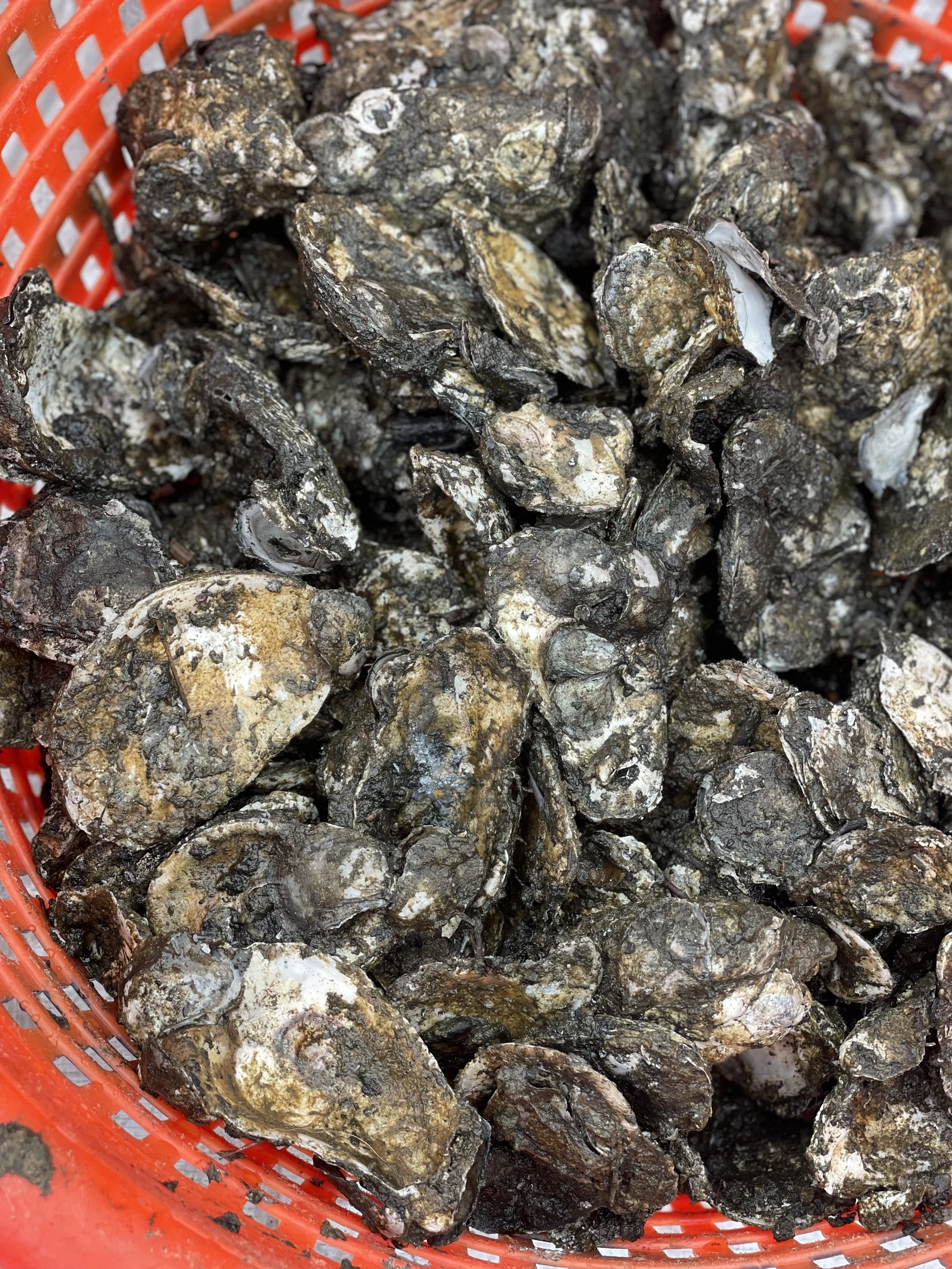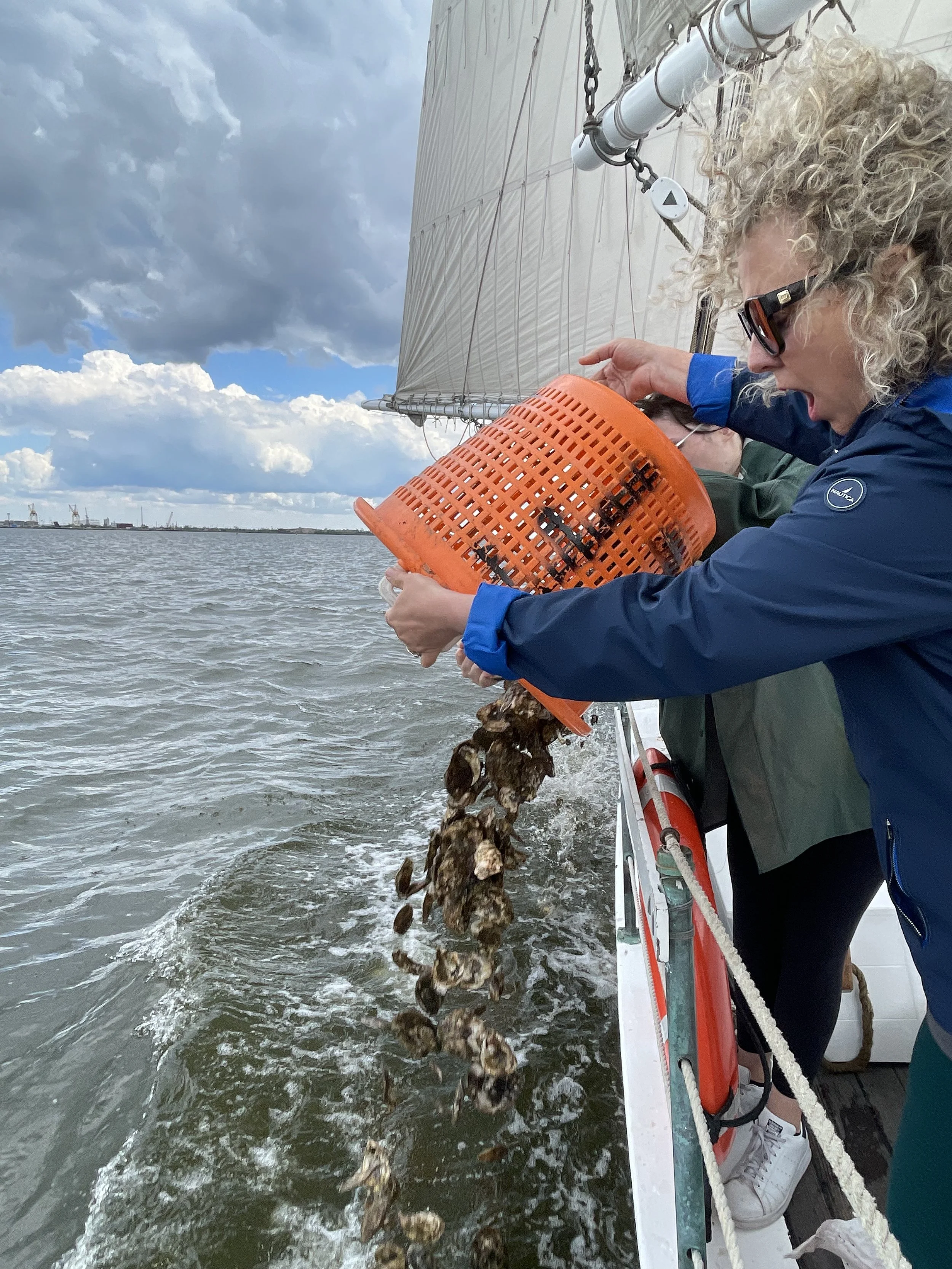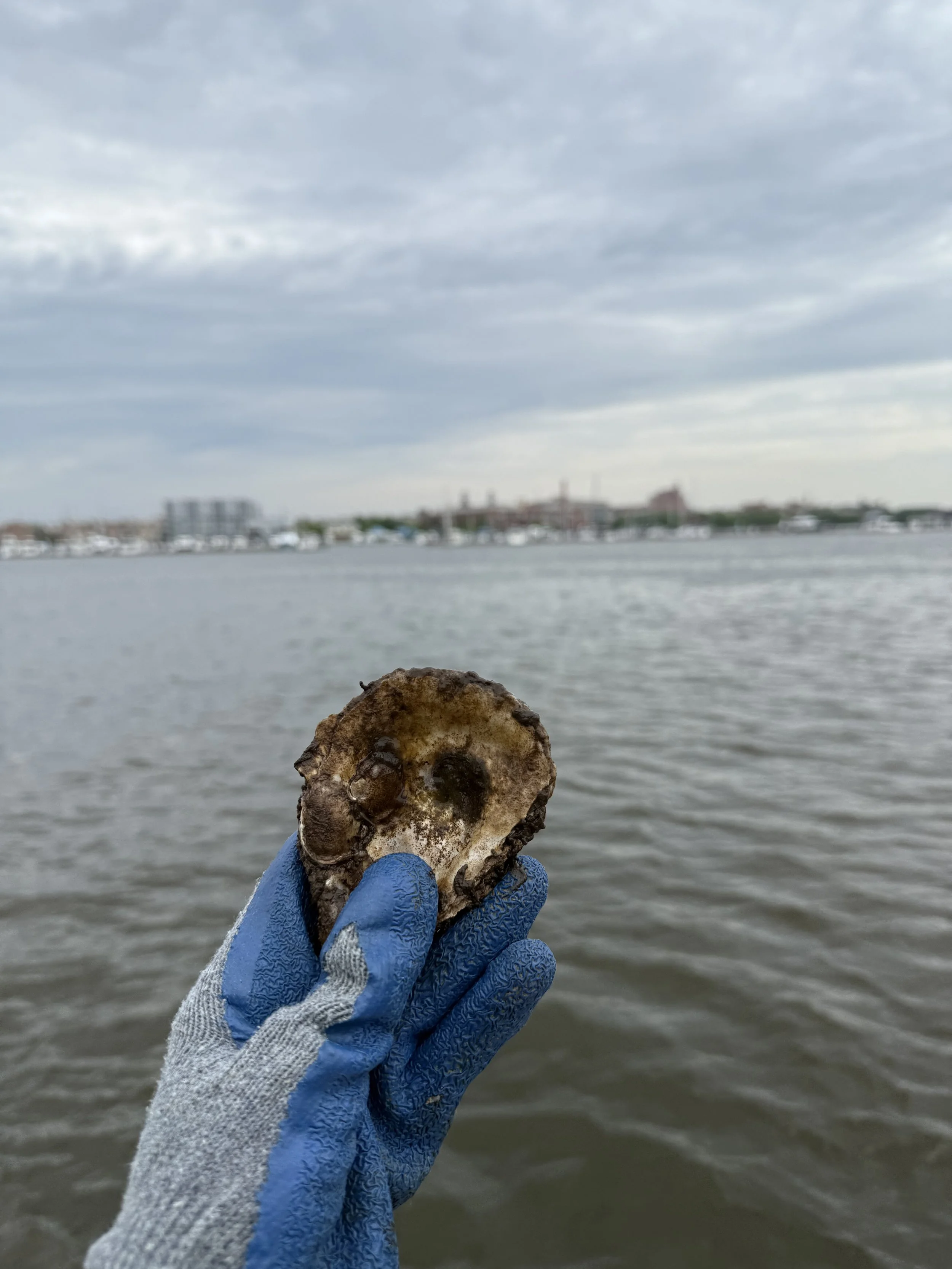5 Things You Didn’t Know About Oysters
Everyone loves oysters- but most people will only ever enjoy them on their plate. If you’re an oyster gardener, however, you get to experience the world of oysters through an entirely different lens! Through the Baltimore Oyster Partnership, we are working to restore the oyster population in the Chesapeake Bay and improve water quality in the Baltimore Harbor by oyster gardening. And that means we know some fun facts about oysters. Here are 5 Things You Didn’t Know About Oysters!
#1- Oysters naturally clean the water around them
Oysters are natural filter feeders, which means they “eat” by filtering plankton and other small particles from the water. This cleans the water and improves water quality by removing pollutants. A mature oyster can filter up to 50 gallons of water a day. When oyster populations in the Chesapeake Bay were at their peak, they could filter the Bay completely in 3-4 days. Now, it takes closer to a year.
#2- Oysters are a Keystone Species
A keystone species is one that is integral to their environment because of the benefits they provide for other species and the habitat itself. Oysters are considered a keystone species for several reasons. As we just learned, they improve the water quality of their environment by filtering out algae and suspended solids. Their reefs also provide habitat for a diverse community of species. Some of the species that use the reef as habitat are menhaden, shrimp, and crabs.
Additionally, oysters also sequester carbon from their environment and buffer increasing acidity of the water around them.
#3- The Chesapeake Bay used to be home to 450,000 acres of oysters
Oysters have always been here! The oysters in the Chesapeake Bay used to thrive in tall, elevated reefs that kept oysters in nutrient-rich water levels (versus the lower, flat reefs that you would find today). These reefs were so large that they could be obstacles for boats coming through the Bay. The Baltimore Harbor was also full of oysters, some who grew as large as dinner plates! Oysters were so plentiful in the Harbor that you could hypothetically walk across the entire harbor just on oysters.
Since the 20th century, these populations have significantly declined due to over-harvesting, habitat degradation, and disease.
#4- Oysters were a huge cornerstone of the Baltimore economy
Watermen in Baltimore and Maryland made a living harvesting oysters for centuries. The oyster canning industry in Baltimore played a big part in the region’s growth as well (and is memorialized at the Baltimore Museum of Industry, which is housed in the only surviving cannery).
Skipjacks were built starting in the 1890s for the purpose of oyster dredging, and now in Baltimore the skipjacks have come full circle- we use Living Classroom’s historic skipjacks to plant our oysters in the bay!
Learn more about the Chesapeake’s Oyster History at Preservation Maryland.
#5- The Baltimore Oyster Partnership works to restore oysters in the Bay
Through the Baltimore Oyster Partnership, we are actively working to restore oyster populations and the ecosystem benefits they provide! At Waterfront Partnership, we grow spat (baby oysters) at oyster gardens around the Inner Harbor. These oysters filter the Harbor around them and help improve water quality while they grow. With the help of our volunteers, we keep their habitats clean while they grow to maturity (one year). Once they’re mature, our volunteers help us transport these oysters to Fort Carroll, a protected reef in the Patapsco, where they will live out the rest of their days.



